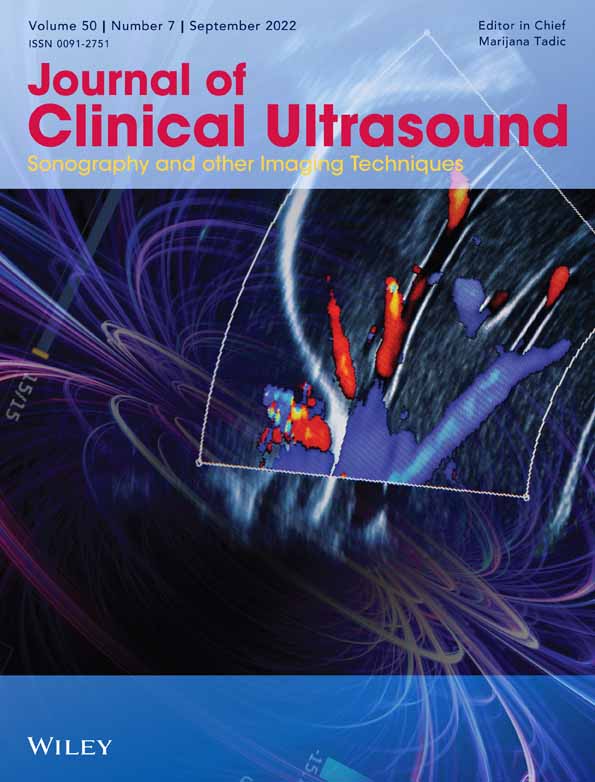Prenatal ultrasonic features of a mediastinal teratoma: A case report and literature review
Abstract
Fetal mediastinal teratomas represent only 10% of congenital teratomas in children and 2.6% of all mediastinal masses in children. Teratomas have multifactorial etiology, such as chromosomal abnormalities. Fetal mediastinal teratomas are rare. Mediastinal teratomas can cause hydrops fetalis, fetal demise, and neonatal respiratory distress; therefore, accurate perinatal management and interventions are very important. We describe a case of fetal mediastinal teratoma wherein the cystic fluid in the fetal tumor was aspirated and confirmed by surgical pathology after birth at the authors' center. The teratoma in this case was characterized by a large single cystic mass with clear borders in the anterosuperior mediastinum, which grew rapidly and was closely related to the thymus. The infant was healthy at birth, and the tumor was surgically removed the age of 1 year. The postoperative course was uneventful, and the patient was in good health 6 years postoperatively. This case and literature review suggests that ultrasound examination can accurately diagnose fetal mediastinal teratomas, which is beneficial to provide an accurate basis for fetal prenatal intervention and treatment. Additionally, an important ultrasound feature of a fetal unicystic mediastinal teratoma is a saddle-shaped mass with clear boundaries, which provided an accurate reference for the diagnosis of a fetal cystic mediastinal teratoma by prenatal ultrasonography.
Open Research
DATA AVAILABILITY STATEMENT
Data sharing not applicable to this article as no datasets were generated or analysed during the current study.




